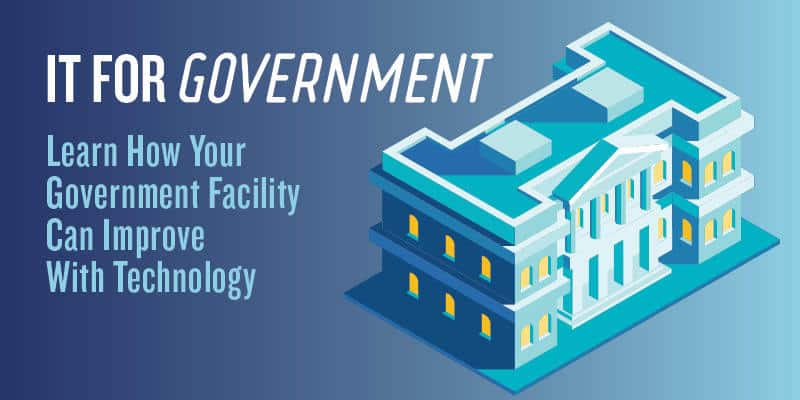Every day, more government services become available online. From the DMV to EMS, information technology (IT) is revolutionizing the way government agencies perform their day-to-day business.
Although this turn to digital government is streamlining processes for both the government employees and the citizens who utilize the services, it also opens up the possibility of cybersecurity breaches that could be potentially devastating. In addition, improperly managed IT can lead to slow processing time, ineffective digital services and other frustrating issues for government employees and citizens.
To mitigate the risks associated with digital government services while leveraging the benefits of online services and updated technologies, it is up to government agencies to prioritize security and efficiency. At first glance, ensuring a reliable IT infrastructure, streamlined workflows and ironclad cybersecurity protection may seem cost-prohibitive to government budgets, but luckily there are a variety of simple and cost-effective changes that government agencies can take to help revolutionize security and efficiency.
Centralize IT Functions
IT systems are easier to manage, maintain and protect when everything is centralized, or organized in and operated from a central system. A great example of this is Microsoft’s Windows Admin Center, a powerful tool that allows users to manage their Windows servers and Azure cloud systems directly through a single platform.
In addition to centralizing IT platforms, government agencies can do the following to streamline their IT.
- Implement new policies and processes. Develop robust, tested continuity and disaster recovery plans to be better equipped to respond to critical events.
- Perform routine system backups. Keep operations running smoothly even when systems fail by having organized, managed backups.
Stay Current with System Updates
Upgrading IT systems regularly is key to keeping them running at peak performance and protecting them from potentially exploitable software vulnerabilities. However, many government agencies may not even be aware of the age or capabilities of their current systems. Old and outdated systems are more prone to cyber attacks, as they are not updated with the latest security technology and have been on the market long enough for hackers to learn how to breach.
Government agencies can keep their technology up to date by performing regular system audits and replacing or updating them as needed. In addition, they should perform regular software and system updates as recommended by the manufacturer.
Implement User Awareness Training
Many government employees may be unaware of how their online activity can unintentionally expose agencies to cyber attacks. In fact, users are the greatest threat to government cybersecurity. To mitigate risks associated with government employees’ online activity, agencies can implement user awareness training programs that teach all employees and managers how to spot and avoid potential cybersecurity risks or threats.
At Taylored Systems, we take IT infrastructure and cybersecurity seriously — especially when it comes to implementing technology in government settings and protecting government facilities from cyber attacks. Our e-book How Government Facilities Can Improve Technological Efficiency provides government agencies a comprehensive guide for integrating, streamlining, improving and protecting their technology from cyber attacks. Download the e-book now to get started.

